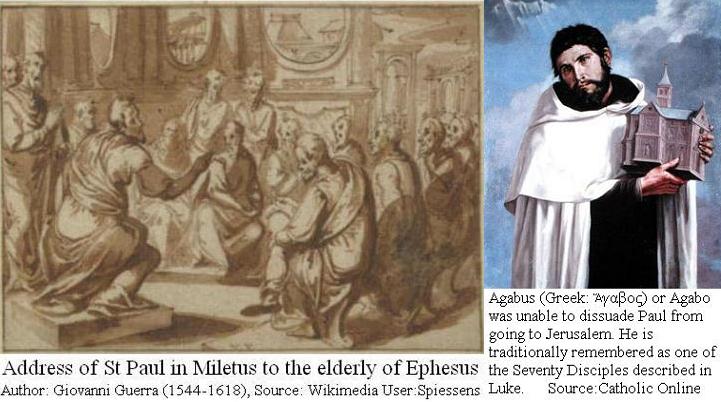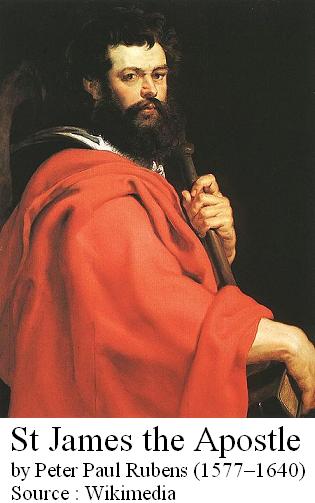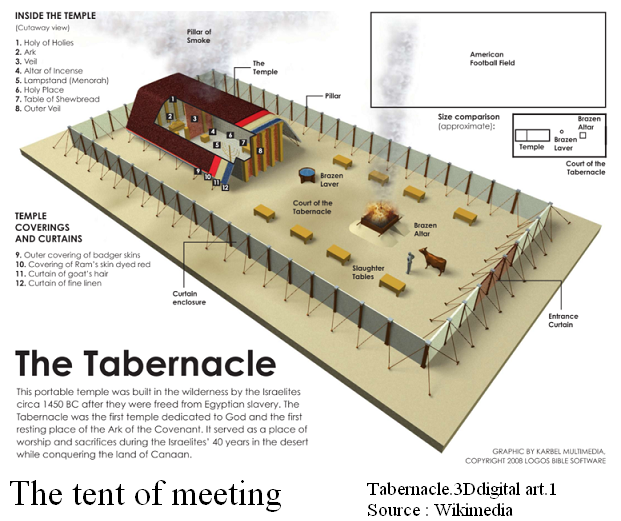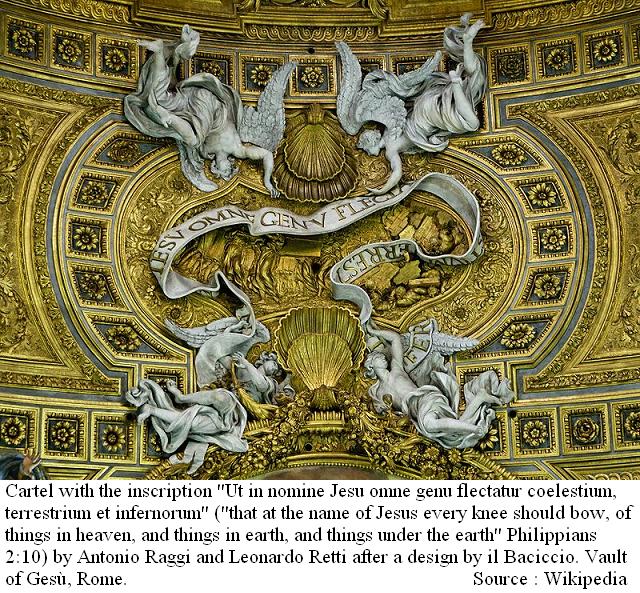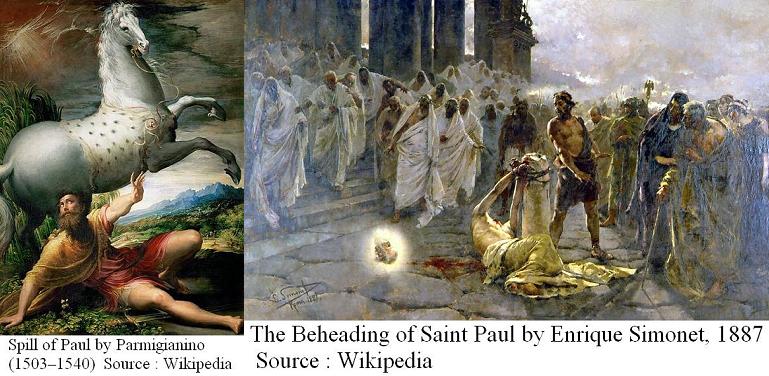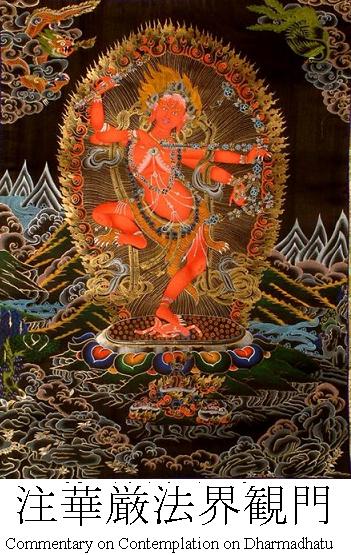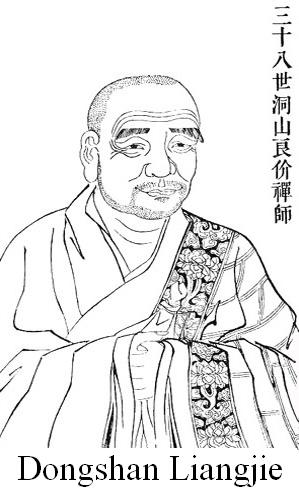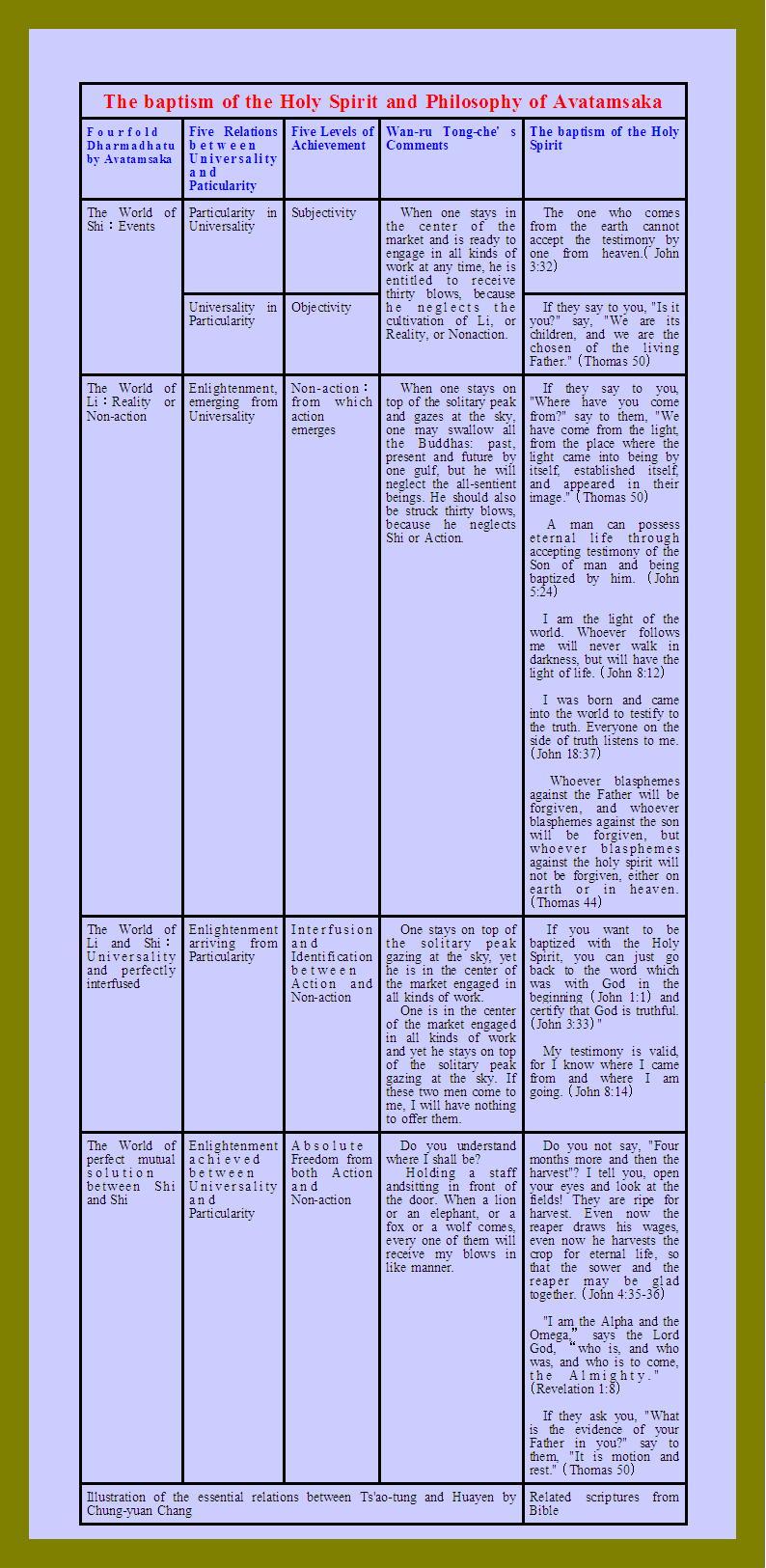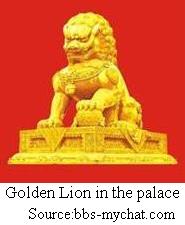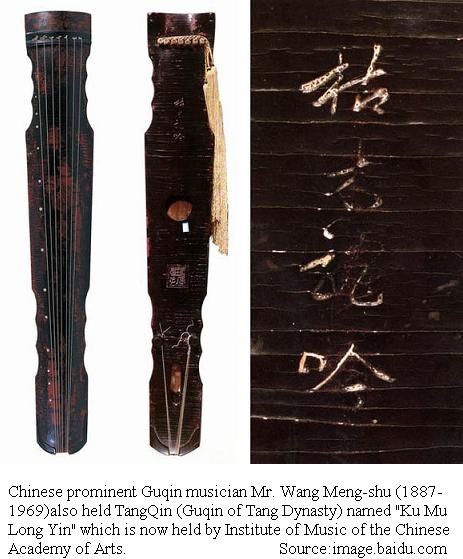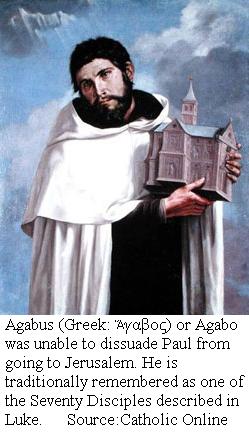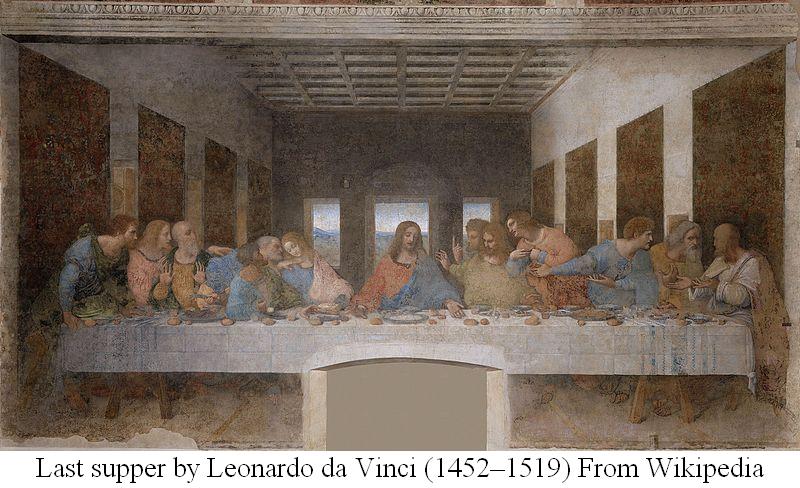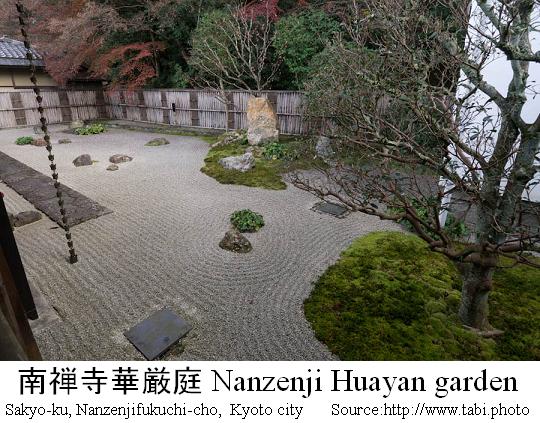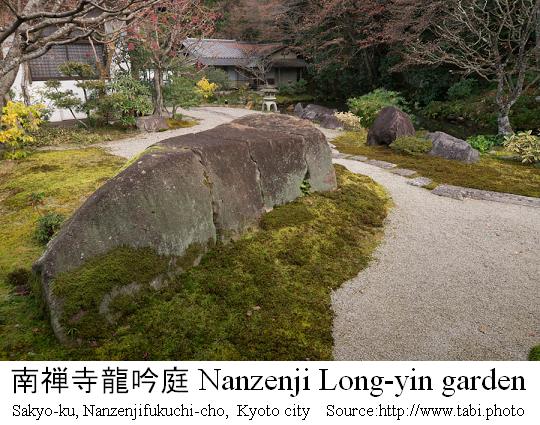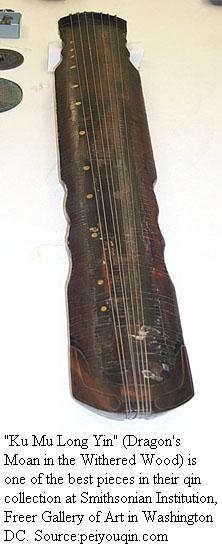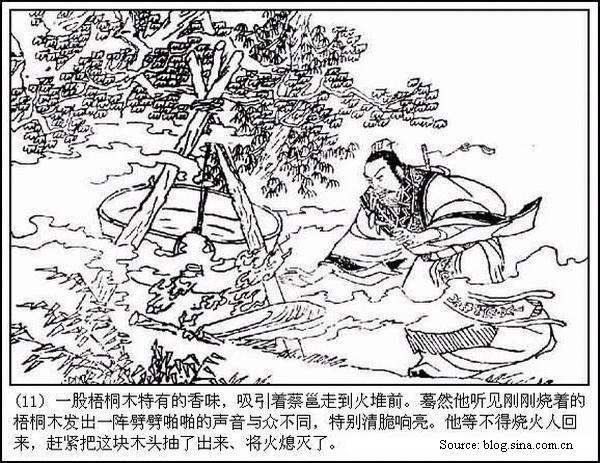Review:The baptism of the Holy Spirit (A dragon sings in a withered tree)
The missionary work in Asia province which Paul had dared to carry out seems to have brought anger of not only the members of the Synagogue of the Freedmen-Jews but also by the mainstream of Jerusalem Church and even the hierarchy of Jerusalem including the House of Hanan (the clan of the High Priest Caiaphas and his father in law Annas), the supporter of both of them, because they had perceived such conduct by Paul as a departure from the agreement of the First Apostolic Conference
Paul, who had completed his initial purpose to evangelize in the province of Asia, planned to return to Jerusalem from Corinth by sea after revisiting the cities of Macedonia and Greek and set out for Macedonia and arrived in Corinth. However, because he perceived a plot made by the Jews against him, returned to Macedonia to discuss the countermeasure with Luke. As a result, Paul decided to go to Jerusalem together with a big cheering squad consisting of representatives from churches around the Mediterranean region. From Miletus, Paul sent to Ephesus for the elders of the church. When they arrived, Paul told them his tragic resolution as if he went into the jaws of death. They all wept as they embraced him and kissed him. Then they accompanied him to the ship.
Agabus predicted Paul's imprisonment and adviced not to visit Jerusalem
Paul and his companions sailed to Patara passing through Cos and Rhodes and found a ship crossing over to Phoenicia and landed at Tyre. Finding the disciples there, he and his companions stayed with them seven days. Surly air in Jerusalem seems to have been transmitted to Tyre, which is about 160 km away from Jerusalem. They, too, urged Paul not to go on to Jerusalem. (Acts 21:4)
However, they continued their voyage from Tyre, passed through Ptolemais and reached Caesarea and stayed at the house of Philip the evangelist, one of the Seven who had been chosen from the Hellenic believers together with Stephen the Martyr to be entrusted day-to-day management of the Jerusalem church on behalf of the Twelve Apostles.
At that time, a prophet named Agabus came down from Judea. He took Paul's belt, tied his own hands and feet with it and said, "The Holy Spirit says, 'In this way the Jews of Jerusalem will bind the owner of this belt and will hand him over to the Gentiles.' " When they heard this, they and the people there pleaded with Paul not to go up to Jerusalem. (Acts 21:10-12)
Agabus, known as the prophet who had predicted that a severe famine would spread over the entire Roman world which had happened during the reign of Claudius (Acts 11;28), seems to have sent by the Jerusalem Church in order to let Paul not come to Jerusalem by telling him that both the church and the House of Hanan could not protect him anymore as his missionary work in Asia province had brought anger of the members of the Synagogue of the Freedmen-Jews and had been perceived as a departure from the agreement of the First Apostolic Conference by not only the members of the Synagogue of the Freedmen-Jews but also by the Jerusalem Church and the House of Hanan.
At the time, opinion of the religious community in Jerusalem seems to have been controlled by the members of the Synagogue of the Freedmen-Jews. Although both the members of the Synagogue of the Freedmen-Jews and the Jerusalem Church were supported by the House of Hanan, the incumbent high priest at that time was Ananias, son of Nedebaios, who had been appointed to the high priest (46-52) by Herod King of Chalcis (41-48) and did not belong to the House of Hanan. He was accused regarding a dispute settlement between the Jews and the Samaritans and was sent to Rome for trial, but was acquitted by the emperor Claudius. But he was murdered by the people at the beginning of the First Jewish-Roman War. Anyway, the high priest would have to treat the situation in the same manner taken by them for the incident of Stephen, if the clash of the Hellenists and the Hebraists relapsed after the entering of the delegation of Hellenic believers led by Paul. And the mainstream of Jerusalem Church led by James the Less, too, would have had not to take remedial action and remain on the sidelines just as they had done so when Stephen had been martyred. Agabus seems to have been given the mission to tell Paul clearly that it was not a plot made by the members of the Synagogue of the Freedmen-Jews, but was the consensus of the religious community in Jerusalem including the Jerusalem Church.
However, Paul did not change his decision to go to Jerusalem, saying, "I am ready not only to be bound, but also to die in Jerusalem for the name of the Lord Jesus." Then they had to give up to dissuade him and said, "The Lord's will be done." (Acts 21:13-14)
At that time, Paul might have had a option to postpone to visit Jerusalem and return to Antioch. However, not only members of the Jerusalem Church but even Barnabas and Mark showed the attitude to tune their views to those of the members of the Synagogue of the Freedmen-Jews who were aiming to return to Jewish fundamentalism. Thus it was clear that Paul had to be more isolated later. Moreover, Paul also clearly understood that he would not anymore have the chance to march into Jerusalem leading the delegation of Hellenic believers from the Mediterranean region. Therefore, he seems to have chosen the option to go to Jerusalem according to his original plan.
By the way, Philip had four unmarried daughters who prophesied. (Acts 21:9) Ancient churches appear to have had teachers in charge of guidance relating to the biblical interpretation and daily norms and prophets who conveyed the revelation of God. And Apostles seem to have concurrently played the both roles of prophet and teacher. Jesus was also sometime called "Teacher" and sometime called "Prophet."
Prophecy of Jesus
Jesus was not crucified only once at the end of thirty-four years of his life but the thirty-four years of his life itself was the Crucifixion. For him, everything in his life was fulfilment of the word of God that had been determined in advance. When the word of God that had been determined for him was testified by his works in his life, the human race obtained the immortal scripture.
The words, Jesus told his disciples during the Last Supper and afterward until his arrest, were the conclusion of the sermon through his life and his prophecy indicated the way which his disciples should follow after the Crucifixion.
When Jesus told his disciples, "You know the way to the place where I am going," Thomas said to him, "Lord, we don't know where you are going, so how can we know the way?" Jesus answered, "I am the way and the truth and the life. No one comes to the Father except through me. If you really knew me, you would know my Father as well. From now on, you do know him and have seen him." Philip said, "Lord, show us the Father and that will be enough for us." Jesus answered: "Don't you know me, Philip, even after I have been among you such a long time? Anyone who has seen me has seen the Father. How can you say, 'Show us the Father'? Don't you believe that I am in the Father, and that the Father is in me? The words I say to you are not just my own. Rather, it is the Father, living in me, who is doing his work. Believe me when I say that I am in the Father and the Father is in me; or at least believe on the evidence of the miracles themselves. I tell you the truth, anyone who has faith in me will do what I have been doing. He will do even greater things than these, because I am going to the Father." (John 14:4-12)
This interaction between Jesus and his disciples is the identical philosophy of Hua-yan (華厳: 'Flower Garland' from Sanskrit 'Avatamsaka'), the essence of Mahayana Buddhism, and has a strong resemblance to the teachings of 'Wu Wei Pian Zheng' (五位偏正: The Five Relations Between Particularity and Universality) maintained by Dong-shan Liao-jie (807-869) and 'Si Liao Jian' (四料簡: Four Processes for the Liberation of Subjectivity and Objectivity) by Lin-ji Yi-xuan (?-867).
Mahayana Buddhism spread toward west
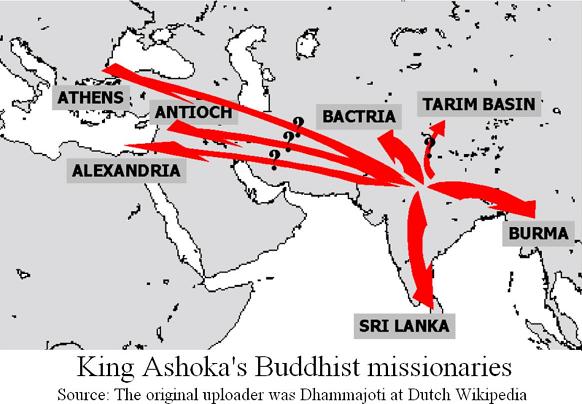
When Hellenism and Gnosticism spread over the world and the businessmen who called themselves freedmen built a financial district in London of British Isles, Mahayana Buddhism was flourishing in North India. After the death of Alexander the Great, the Mauryan dynasty brought almost all of India under its control by the year 232 BC. King Ashoka, the 3rd King of the Maurya Dynasty, dispatched Buddhist missionaries over 256 times to Seleucid Persia, Ptolemaic Egypt and even Greece. According to "The Original Jesus - Buddhist Sources Of Christianity by Elmer R. Gruber & Holger Kersten," the Jewish historian Philo (20/30BC-40/45AD), who was a leader of Jewish community in Alexandria, wrote that a religious and vegetarian brotherhood called the Therapeutae, who had advocated poverty, celibacy, obedience, good deeds, compassion and meditation and had laid aside all worldly goods including their relatives, had lived in the area south of Alexandria near Lake Mareotis. They seems to have been descendants of missionaries who had been dispatched to Alexandria by King Ashoka at the era of Ptolemy II Philadelphos.
The origin of the church movement
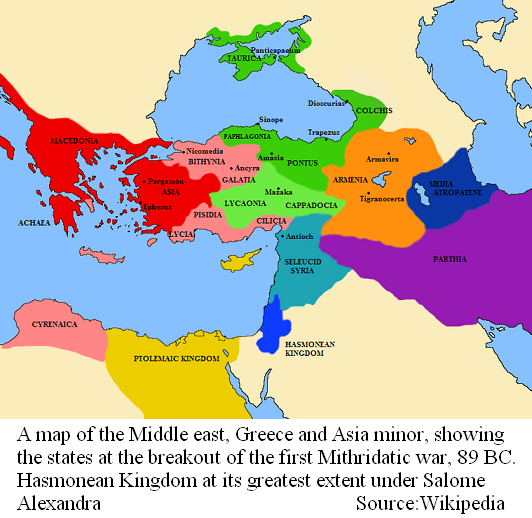
The Alexander the Great's East Expedition accelerated the exchange between the Eastern and the Western cultures. Under such phenomenon, the Hasmonean dynasty, the first unified Jewish nation except in the mythical era, was born in Palestine. Under the Hasmonean dynasty's rule, not only different ethnic groups' mass conversion gained momentum in its country, but Judaism also spread into its neighboring countries, such as Syria, Asia Minor and even the northern Africa. And those who served as the vanguard to increase the Gentile Judaists explosively seem to have been nothing other than the members of the Synagogue of the Freedmen-Jews. The tidal wave of church movement, which had occurred in the Mediterranean coast and finally reached Jerusalem, the headquarters of Judaism, was also originally derived from the Synagogue of the Freedmen-Jews. In fact, big communities of Jewish believers seem to have been formed in Cyrene and Alexandria of North Africa much earlier. In Alexandria, under the rule of the Ptolemy dynasty, not only the translation of The Old Testament into Greek was initiated, but the scholars also attempted to fuse Judaism with Greek philosophy and the tide of Gnosticism occurred under the environment of Syncretism
Philosophy of Hua-yan and Zen Buddhism
On the other hand, in China, a first version and a second version of "the Mahayana Sutra (大乗経)" were completed in 420 AD and in 699 AD respectively. The first version covered sixty fascicles is generally known as the Jin script (晋経) and the second version consisting of eighty fascicles is called Tang script (唐経). The third script, "Entering the Dharmadhatu (入法界品 from Sanskrit 'Grandavyuha')", which was the final chapter of the fore-going scripts, was translated into forty fascicles in 798 AD. Thus, "the king of the Mahayana Sutra" was clad completely in a Chinese gown. The completion of Chinese version of the Mahayana Sutra became a decisive factor of Buddhism's penetration into the Eastern world just as the translation of The Old Testament into Greek became an important factor of the birth of Gnosticism and Christianity.
According to Mr. Chung-yuan Chang (1907-1988), Professor of Philosophy at the University of Hawaii at Manoa, the philosophy of Hua-yan, regarding the existence of both Li (理: universality) and Shi (事: particularity) which are mutually dependent upon each other and also regarding the unimpeded mutual solution between Li and Shi which is absolutely free from spatial and temporal limitations, had a very significant impact on Zen Buddhism.
The philosophers of Hua-yan consider that "Li," reality or truth which is absolutely free from spatial and temporal limitations, is ever manifested in "Shi," appearance which is under spatial and temporal limitations. Chinese Hua-yan Buddhist Cheng-guan (澄観760-820) compared the relation of "Li" and "Shi" with the relation between water and waves and said, "There is no wave that is not water, and there is no water that could not be a wave." Another Hua-yan Buddhist Fa-zang (法蔵643-720) said, "Li does not exist without Shi, for what is pure is ever mixed; what is absolute reality is ever manifested in appearance. Shi comprises Li in its entirety, for what is mixed is ever pure. Li and Shi exist freely by themselves; yet there is no impediment between what is pure and what is mixed."

While such philosophy of Hua-yan Buddhists is consistent with Gnosticism, the Book of Changes (易経) also explains, "That which is solved by changes is Shi." And Alfred North Whitehead (1861-1947), a Modern English mathematician and philosopher, too, said, "A molecule is an historical route of actual occasions, and such a route is an event." Therefore Professor Chang said, "Both the Chinese ancients and the modern philosopher apparently agree that an event is not static but is unceasingly in motion. Thus Shi is a particularity or an event in the process of action."
Further leap after climbing to the top of a pole of one hundred feet
Although Fa-zang in his book "Hua-yan Yi-hai Bai-men (華厳義海百門)" says, "As soon as one understands this, one's mind is simply and abruptly enlightened," few can really reach this level of intellection through such metaphysical approach that Zen Buddhists call "The pole one hundred feet long (百尺竿)." This is why zealous learners of Zen would rather concentrate on the mind awakening than on the pursuit of intellectual profundity. However, the leading masters of Zen Buddhism, Dong-shan Liao-jie and Lin-ji Yi-xuan, thoroughly mastered the metaphysical structure of Hua-yan and developed their distinctive pedagogical methods or formulas, such as 'Wu Wei Pian Zheng' (五位偏正: The Five Relations Between Particularity and Universality) and 'Si Liao Jian' (四料簡: Four Processes for the Liberation of Subjectivity and Objectivity) respectively and urged learned priests to further leap after climbing to the top of a pole of one hundred feet long (百尺竿頭更進一歩).
A dragon sings in a withered tree
During the later period of the Tang Dynasty in China, a monk asked Zen Master Xiang-yan Zhi-xian (香厳智閑?-898), "Master, what is the way?" Xiang-yan said, "A dragon singing in a withered tree." The monk said that he did not understand. Xiang-yan said again, "The eye is in the skull." Some time later, the monk asked Zen Master Shi-shuang Qin-zhu (石霜慶諸807-888) what he thought of the statement given by Xiang-yan. Shi-shuang replied, "When we say that in a withered tree a dragon is singing, there is still a joy there." The monk again asked: "What is the meaning of the eye in the skull?" Shi-shuang said, "There is still consciousness there."
When Cao-shan Ben-ji (曹山本寂804-901), who was a Dong-shan Liao-jie's disciple and founded Cao-dong Zong(曹洞宗: One of leading sects of Zen Buddhism in China) together with Dong-shan. heard this, he composed a poem which reads:
He who says that a dragon is singing in a withered tree, (枯木龙吟)
He truly sees the way. (真见道)
The skull has no consciousness, (髑髅无识)
But wisdom's eye shines in it. (眼初明)
When joy and consciousness are eliminated, (喜识尽时)
Fluctuation and communication will also cease. (消息尽)
In this way, purity should be seen in the impure. (当人那辨浊中清)
According to Professor Chang, the essence of Zen is not merely non-action, but also action which reveals non-action. Thus non-action and action are interfused and identified. So in the withered tree the dragon is singing. In the skull the eye is shining. It is the same as to say Li is identified with Shi. Therefore Cao-shan maintained that purity is revealed through impurity. In other words, the dragon's singing is the manifestation of the withered tree. Without the dragon's singing there would be no expression of the withered tree. The dragon's singing and the withered tree are mutually identified. The dragon's singing is the withered tree and the withered tree is the dragon's singing. In Hua-yan's expression, Li is Shi and Shi is Li.
At the Last Supper, Jesus said to Philip, who had asked him to show them the Father, "I am in the Father and the Father is in me. It is the Father, living in me, who is doing his work." (John 14:8-10) Though Jesus, who appeared in this world, was "Shi" which had spatial and temporal limitations. The advent of God is testified through works of Jesus just as "Li" is only testified through unceasing motion of "Shi," And Jesus is just one of "Shis." In other words, "Li" is inherent in all things in this world. Thus the dragon's singing or the work of God can be testified even with a withered tree by one who has ears. Jesus said, "Split a piece of wood; I am there. Lift up the stone, and you will find me there." (Thomas 77) And he also said, "One is born so that the work of God might be displayed in his life. Thus not only a man blind from birth but anybody must do the work of God who sent him as long as it is day." (John 9:3-4)
Paul, too, seems to have thought that he should go to Jerusalem and be arrested so that the work of God might be displayed in his life just as Jesus had decided to be crucified to testify the work of God.
<To be continued>What is "Baptism with The Holy Spirit"?
According to the dialectic of the Gospel of John,
【Thesis】"A man can possess eternal life through accepting testimony of the Son of man and being baptized by him." (John 5:24)
【Anti-thesis】But "The one who comes from the earth cannot accept the testimony by one from heaven."(John 3:32)
How then can a man possess eternal life?
【Synthesis】"If you want to be baptized with the Holy Spirit, you can just go back to the word which was with God in the beginning (John 1:1) and certify that God is truthful. (John 3:33)"
When he said, "You are Huichao," Zen Master Fayan thrusted vivid Self in Huichao in front of his eyes.
Purchase here[Reference] "Ku Mu Long Yin" (Dragon's Moan in the Withered Wood) is one of the best pieces in their qin collection at Smithsonian Institution, Freer Gallery of Art in Washington DC. This instrument was made in the middle Tang period (approximately 766-826AD). The bottom view of the qin. The dragon pool has 4 continuous curves. The phoenix pond has 3 continuous curves. Above the dragon pool, there are engraved 4 characters, "Ku Mu Long Yin" with running cursive script. Between the pond and pool there is the big square seal "Qing He" (Pure harmony) in seal character.
Besides, Chinese prominent Guqin musician Mr. Wang Meng-shu (1887-1969)also held TangQin (Guqin of Tang Dynasty) named "Ku Mu Long Yin" which is now held by Institute of Music of the Chinese Academy of Arts.
Jiao Wei is a famous writer of the Eastern Han Dynasty, musician Cai Yong personally produced a piano. Cai Yong in "desperate Jianghai, far trace Wu", had in fire rescue a not burn, abnormal sound of sycamore. He according to the length and shape of wood, made a lyre, really extraordinary voice. The handle tail is still left scorch, named "coke tail". "Jiao Wei" with its melodious sound and the unique system of law known.
At the end of the Han Dynasty, Cai Yong was killed, the "Jiao Wei" Qin is still intact in the Royal library. 300 years after. During the reign of the Qi Mingdi, to appreciate Superman piano art of Guqin master Wang Cuxiong and extraordinary people remove store for many years "Jiao Mei" chin, play to Wang Zhongxiong. Wang Zhongxiong played for five days, and improvised the song "dedicated to the emperor" chagrin. To the Ming Dynasty, Wang Fengnian of Kunshan is a collection of "Jiao Wei" Cai Yong manufacturing.
Your Comments / Unsubscribe
SEAnewsFacebook
SEAnewsGoogle
SEAnews eBookstore
SEAnews eBookstore(GoogleJ)

